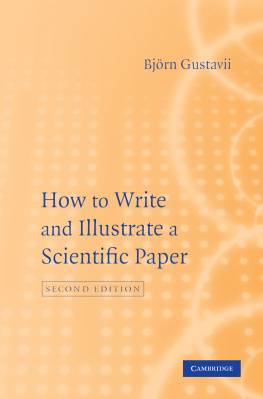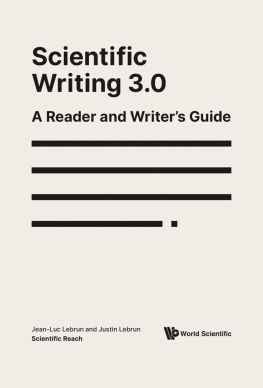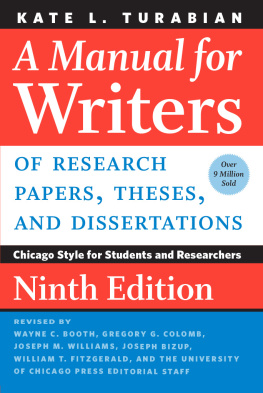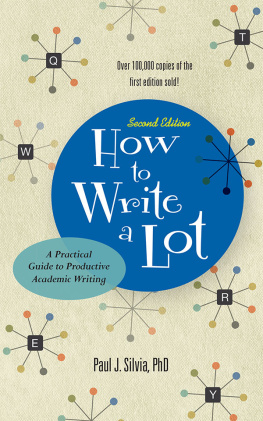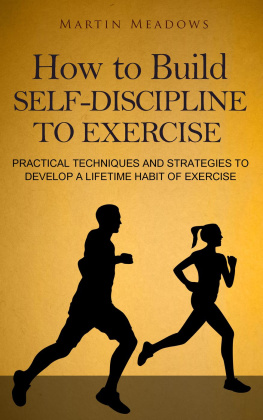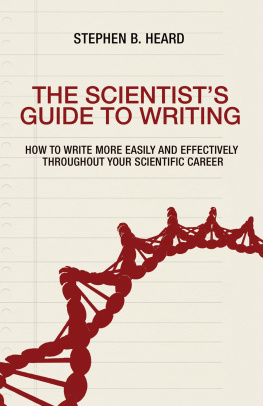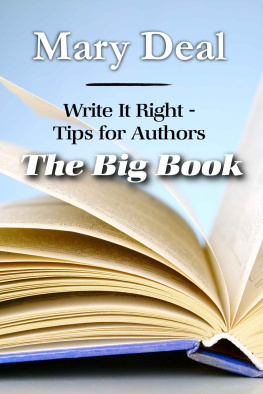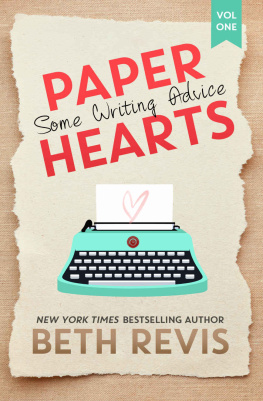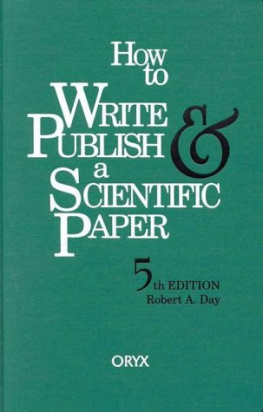HOW TO WRITE AND ILLUSTRATE A SCIENTIFIC PAPER SECOND EDITION
This Second Edition of How to Write and Illustrate a Scientific Paper will help both first-time writers and more experienced authors, in all biological and medical disciplines, to present their results effectively. Whilst retaining the easy-to-read and well-structured approach of the previous edition, it has been broadened to include comprehensive advice on writing compilation theses for doctoral degrees, and a detailed description of preparing case reports. Illustrations, particularly graphs, are discussed in detail, with poor examples redrawn for comparison. The reader is offered advice on how to present the paper, where and how to submit the manuscript, and finally, how to correct the proofs. Examples of both good and bad writing, selected from actual journal articles, illustrate the authors advice which has been developed through his extensive teaching experience in this accessible and informative guide.
BJRN GUSTAVII has been teaching courses in scientific writing for doctoral (Ph.D.) students in medicine for 25 years. He brings his personal experience to this book, both from writing more than 100 of his own research papers and from his work as a journal editor.
How to
Write and
Illustrate
Scientific Papers
Bjrn Gustavii
Second Edition

CAMBRIDGE UNIVERSITY PRESS
Cambridge, New York, Melbourne, Madrid, Cape Town, Singapore, So Paulo, Delhi
Cambridge University Press
The Edinburgh Building, Cambridge CB2 8RU, UK
Published in the United States of America by Cambridge University Press, New York
www.cambridge.org
Information on this title: www.cambridge.org/9780521878906
B. Gustavii 2003, 2008
This publication is in copyright. Subject to statutory exception and to the provisions of relevant collective licensing agreements, no reproduction of any part may take place without the written permission of Cambridge University Press.
Originally Published in English by Studentlitteratur Lund, Sweden 2000
First published by Cambridge University Press 2003
Reprint 2005, 2006
Second Edition Published 2008
Reprinted 2008
A catalogue record for this publication is available from the British Library
ISBN 978-0-521-87890-6 hardback
ISBN 978-0-521-70393-2 paperback
Transferred to digital printing 2009
Cambridge University Press has no responsibility for the persistence or accuracy of URLs for external or third-party Internet websites referred to in this publication, and does not guarantee that any content on such websites is, or will remain, accurate or appropriate. Information regarding prices, travel timetables and other factual information given in this work are correct at the time of first printing but Cambridge University Press does not guarantee the accuracy of such information thereafter.
Contents
Preface
Dear Novice Writer,
When I was in your shoes and preparing my first paper, I consulted a book on how to write. I found there a sentence encouraging the reader to stand in boiling water for an hour before doing the analysis:
After standing in boiling water for an hour, examine the contents of the flask.
I had a pretty good idea of what was wrong with the sentence but, at the time, I couldnt figure out how to revise it, and the author didnt tell me. Now I can. If, an hour later, you are still alive:
Place the flask in boiling water for an hour, then examine its contents.
So, in this book, every unfortunate example is followed by an improved version. Good examples are provided with appropriate bibliographic references. Bad ones, however, are presented with references expunged.
Some examples were taken from manuscripts in preparation, presented by participants in my courses on scientific writing. I have been holding such courses for doctoral (Ph.D.) students in medicine since 1980. Other specimens are from manuscripts submitted for publication. They were collected when I served as an editor of Acta Obstetricia et Gynecologica Scandinavica from 1986 to 1994. Yet others are from published material.
From class discussions I have learned what candidates want to know. Based on this information, some chapters are more detailed than others, such as the one on how to prepare graphs.
The current edition contains a new and comprehensive chapter on doctoral (Ph.D.) theses. Numerous other changes also appear in this edition, for example, instructions for making drawings and a description of preparing case reports.
Finally, dont accept all my suggestions, because there is no ultimate truth regarding how to write a paper as I mistakenly believed when I was a bit younger.
Good luck, my friend.
Bjrn Gustavii
Acknowledgments
I thank the following persons, who have read all or parts of the manuscript of the second edition, for their advice and criticism.
Per Bergsj, Norway
Carol Brimley-Norris, Finland
Joy Burrough-Boenisch, UK
Johan Ljungqvist, Sweden
Helen Sheppard, Sweden
Ray Williams, UK
Pl Wlner-Hanssen, Sweden
Special thanks to Tomas Sderblom, a layperson, who read the manuscript for intelligibility; Richard Fisher, who corrected the language; and Eva Dagnegrd, who redrew the graphs and prepared the electronic manuscript.
Basic rules of writing
Winston Churchill was sitting at his desk, working on his epic about World War II, when his private secretary entered the room. Churchill had reached the Blitz the German air strikes against London. His staff of researchers had earlier produced a 150-page brief on the raids. The secretary had been asked to cut it down to about two and a half pages and, after having worked like stink, he could now proudly hand over the condensed version.
Churchill took out his red pen and started to edit. All my sloppy sentences were tightened up and all my useless adjectives obliterated, the secretary tells us in a documentary made about 50 years later (Bennet 1992). In the midst of it all, Churchill said gently, I hope you dont mind me doing this? The secretary answered, Thank you, Sir you are giving me a free lesson in writing plain English.
Brevity
We should emulate Churchill by excluding every nonessential word. Professional writers do it that way. Brevity is an elementary rule of all writing, not only to save valuable publication space, but also because verbose writing obscures meaning and wastes the readers time and patience. And that is also the essence of the next basic rule.
Logic and clarity
To convey information is above all a matter of logic and clarity. What you want to say should be so arranged that the reader can follow your argumentation step by step. Moreover, your sentences should be so clear and easily understood that the reader forgets that he is reading and knows only that he is absorbing ideas (Baker 1955).
Now to the importance of making the manuscript physically attractive. Here is an illustrative example.
Clean typing
Paul Fogelberg, editor of a Finnish scientific journal, was one of the teachers at a course on scientific writing. Late one evening, he told us, he was perusing a manuscript in which only half of the letter a was legible. Page after page, that half-letter pursued him until eventually he began to feel vaguely that this must be something directed at him personally.
I didnt see Fogelberg again until 12 years later at a meeting of editors. I mentioned the damaged typeface, without really expecting that he would remember it. But he replied instantly, It wasnt damaged. Much worse it wasnt cleaned.
Next page
